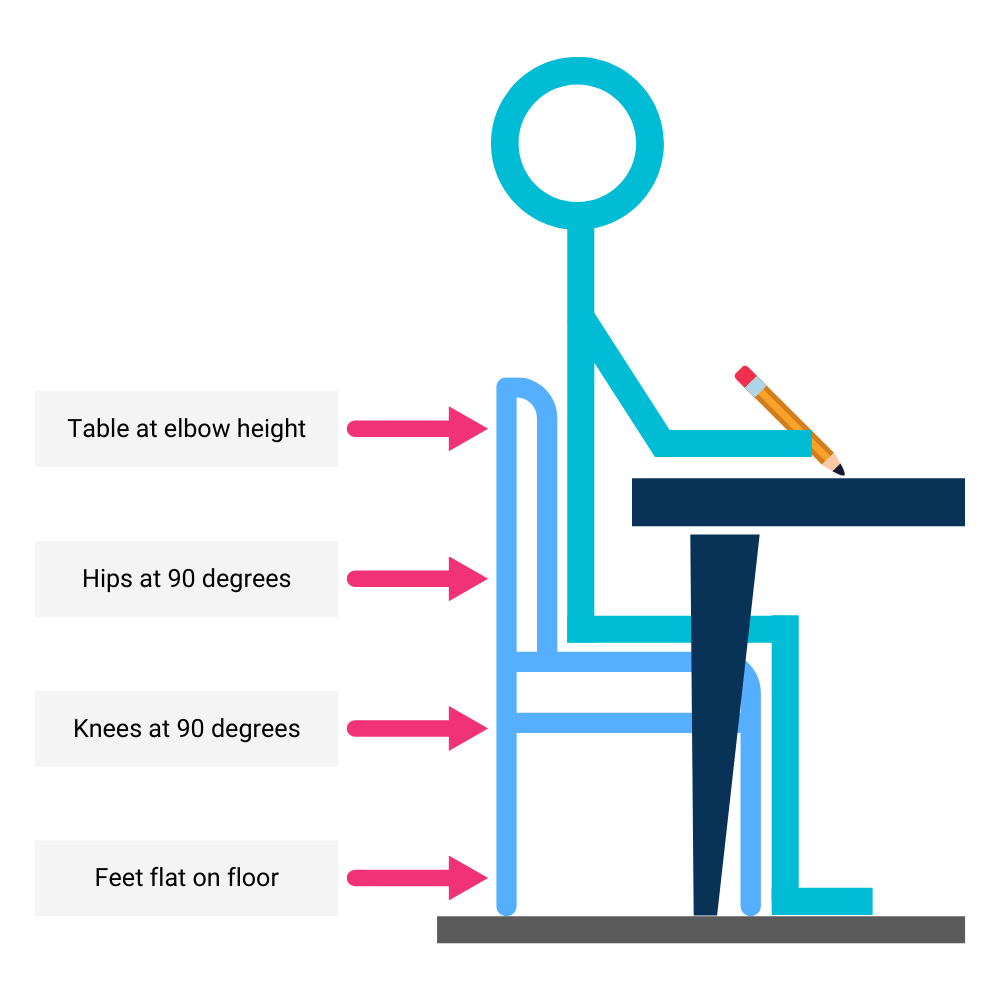Fine motor skills
Sitting correctly
Being seated properly gives a child good stable posture from which they can develop their handwriting.
A well supported trunk is essential for good shoulder control. Children who have difficulty with their movement can find it very difficult to sit comfortably or with stability. It is even more important for these children to get their posture right to help them develop handwriting.

Common problems with seating
Table too high: This causes children to sit with hunched shoulders which restricts movements and affects efficient function of the hands. The child will often hold their head too close to the desk as well.
Table too low: To achieve stability children will often lean forward excessively and will then use the non-dominant hand to support their head rather than the paper.
Chair too high: If a child’s feet are not on a stable surface, then this reduces the base of support and the child has to put more effort in to maintaining their own posture rather than concentrating on their work.
Chair too low: The child’s knees will be too low which they may find uncomfortable for long periods.
Best position

The chair should allow the child to sit comfortably, with feet flat on the floor and bottom well back on the seat.
If the chair is too high (and no smaller one is available), and the child’s feet are not touching the floor, then a phone book, wooden step or footstool should be used to support the feet.
If the chair is too low, cushions or pieces of foam can be used to raise the child.
If the child’s difficulties require slightly different positioning to achieve a good working position, seek help advice from the Occupational Therapist or Physiotherapist service.
Slanted desktops
For many children, a slanted desktop not only gives stability for the arms when writing, but also helps keep a more upright posture at the desk.
Slanted work surfaces allow better positioning of the wrist and hand and help in the development of correct pencil grips.
They can also be helpful for children with visual difficulties, such as when copying work from a board into a book.
Paper position
The paper should be positioned according to which hand the child uses for writing. It should be tilted slightly. This allows the child to see his work and stops the ink smudging.
Tape on the desk can be used to remind the child of the paper position.
The non-writing hand should always be used to stabilise the paper when writing. This helps to support the body, allowing the writing arm to move freely and develop writing skills.

